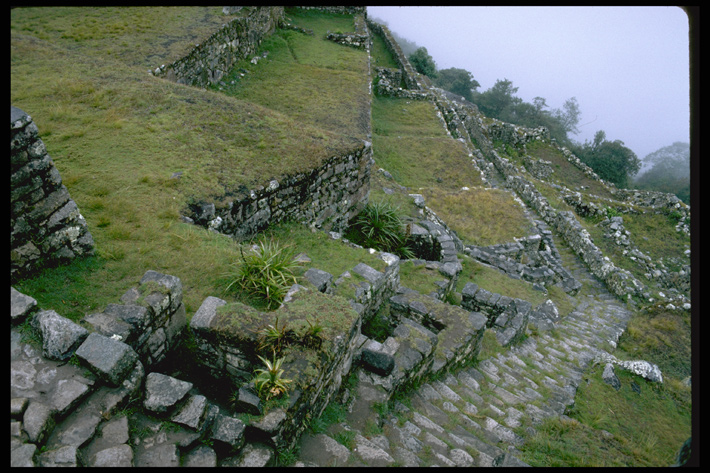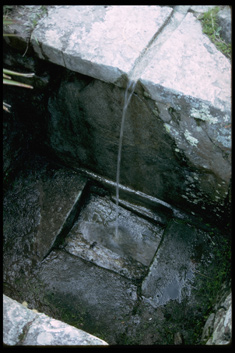Inca Ritual Baths Studied in Peru
Monday, February 25, 2019
CUSCO, PERU—Live Science reports that ground-penetrating radar and laser scans have revealed the foundations of buildings and two additional structures in Chachabamba, an Inca ceremonial complex located within Peru’s Machu Picchu National Park. The fifteenth-century site is known for its terraces, 14 baths laid out in two groups on either side of a sculptured sacred rock, and water system channels that carried water to the baths from a nearby waterfall. “This was undoubtedly a site of religious ceremonial use,” for the elites said Mariusz Ziółkowski of the University of Warsaw. Wastewater from the baths ran through a drainage system to a river in the lower valley. For more, go to “Machu Picchu's Stairway of Fountains.”
https://www.archaeology.org/news/7432-190225-peru-inca-baths
~ ~ ~
Machu Picchu's Stairway of Fountains
By JULIAN SMITH
January/February 2013

(Courtesy Tamara L. Bray)
The square chambers next to a staircase at the Inca city of Machu Picchu are part of an ingenious network of 16 fountains.
One of the most spectacular examples of Inca hydraulic engineering is the "Stairway of Fountains," built sometime after 1450 at the city of Machu Picchu. The fountains supplied the city's inhabitants with clean, fresh water. The first challenge the Inca faced was how to bring water from a pair of rain-fed springs almost half a mile away from the first fountain. At the main spring, Inca engineers built a 48-foot long permeable wall that concentrated the seeping water into a stone-lined canal. The canal also collected water from a second, smaller spring. Water flowed to the city through the canal, which averaged five inches wide and five inches deep, and had an average grade of about 3 percent. Hydraulic engineer Ken Wright calculates the system could carry up to 80 gallons per minute—twice as much water as the springs' typical peak flow—to prevent overflows.

(Courtesy Tamara L. Bray)
Each fountain produced a stream of water shaped to fill a water jug.
More:
https://www.archaeology.org/issues/59-1301/76-sidebars/394-machu-picchu-inca-hydraulic-engineering
 = new reply since forum marked as read
= new reply since forum marked as read


